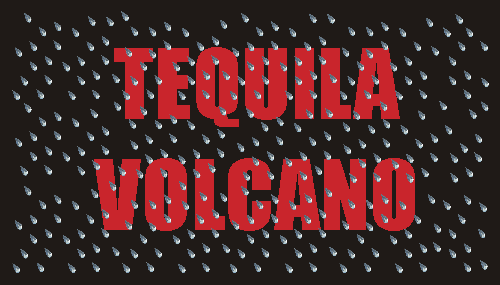|
|
|

|
Bonsai and mountain-climbing cows
It was winter, the first week in february, to be exact, but the temperature in the small, but famous town of Tequila, Jalisco (in western Mexico) was over 90º F. Carlos, a short, husky Tequileño, was already waiting for us. The week before, he had offered to show us a mysterious hole, said to be a "bottomless pit," located atop Tequila Volcano, 2986 meters (9796 feet) above sea level.
We took Hidalgo Street straight south to the edge of town, crossed the railroad track and began the slow, twenty-kilometer climb up the cobblestone road that winds its way to the microwave stations at the top.
"This road is about 25 years old," commented Carlos, "and it took the people of Tequila a full year's work to lay all the cobblestones. Then the Japanese came in and installed the microwave equipment".
"Which is probably in better shape than this road," I remarked while swerving to avoid a pothole.
"As a matter of fact, everything up there is automatic," replied Carlos. "That's why we don't worry too much about this camino."
The higher we went, the colder it got. Not far from the top we passed through an open gate. We could go on straight or turn right. "Both ways lead to microwave stations," said Carlos, but the one on the right gets you to the pit".
Just after turning right, we stopped to check out a small spring below the right side of the road. Even though the ubiquitous, mountain-climbing Mexican cow had crashed the barbed-wire fence around the spring, it appeared that you could still get pure drinking water from here, if you didn't mind splashing around in the mud to reach the source.
When you add a year-round spring to the beautiful pine trees, fresh air and solitude, you have the ideal ingredients for a lovely but lonely campsite. In addition, insect life is plentiful despite the altitude. If you're not particular about how you get your protein, you could literally live off the grasshoppers alone!
A few turns up the road from the spring, we stopped and climbed the small hillside to our left. Carlos explained that this spot was called "Las Minas," The Mines, possibly named after the hole we found next to a stout tree. It was about a meter and a half around and thought to be 200 to 300 meters deep. We dropped a stone down it and timed its fall. As Jalisco's only speleologists, we had grown skeptical about bottomless pits. "Twenty five meters at the most," I remarked, while gearing up to rappel down the hole. A few minutes later I hit bottom at 18 meters, still without a clue as to why this apparently manmade shaft had been dug in the first place.
Disenchanted with the pit, we hiked up to the microwave station. "This is
called 'El Cerro de los Enanos', the Hill of the Dwarfs," said Carlos. The
reference was not to little men, but to the ancient, gnarled trees, none of
which had been able to reach its normal stature, probably because of the
altitude. This little forest of bonsai was enchanting and all the more unreal
for the heavy coat of gray lichen enveloping every branch. ![[CARTOON: of dwarfs and dwarfs - J. Moreno]](dwarfs.gif)
The view from the top of the hill is most impressive. The weird volcanic plug rising up from the lush crater valley seems to beckon the hiker. We had heard it was "easy to climb" so we decided to come back with our friend Steve Bowen who is a mountain climber's mountain climber.
We scrambled downhill from the Cerro de los Enanos towers and soon found a trail heading the same way. We also discovered that the pine and cedar forest we were in is extremely beautiful and very unlike the scenery near the microwave towers. This crater valley is really special. We were so distracted by the wildflowers (such as orchids that grow on the ground rather than on trees), the golden glow of the hillside behind us and the general charm of the place, that it took a long time to reach the foot of the plug.
We stood there staring straight up at a very high, very imposing vertical wall and began to have second thoughts about it being easy to climb.
Steve, however, calmly proceeded upward, occasionally lowering a line for us less talented scramblers. After passing one nasty spot where there was nothing whatsoever to hang on to for dear life but a narrow crack, we arrived at the top and enjoyed a magnificent view in every direction. This is probably only a fifteen minute climb for someone who knows what he or she's doing, but it took us a lot longer, belaying each person with a safety rope over the "hairiest" parts.
HOW TO GET THERE FROM GUADALAJARA
Follow highway 15 west (toward Tepic and Nogales) taking either the fast, expensive Maxipista or the slow, libre. Fifty-eight kms later (36 miles)), you'll come to Tequila's large Pemex station. Take the road to the left of the station, straight into the center of town. Turn left at the busy spot where this street ends and follow Hidalgo street south out of town, enjoying every one of its many speed bumps. With eyes and ears open, cross the railroad tracks and follow what has now become a cobblestone road that takes you to the top in little over a half hour. Total time from the Periférico to the volcano top: about 90 minutes on the libre and 65 by Maxipista.
![[MAP: How to Reach Tequila Volcano]](tequimap.gif)
(from Outdoors in Western Mexico by John and Susy Pint, Editorial Agata, Guadalajara)
John J. Pint
Art: Jesús Moreno